A Critic’s Guide to the 2024 Oscars
An exceptional year for film that included plastic dolls, punk provocations and mushroom clouds. Image: Adobe
Image: Adobe
ANATOMY OF A FALL
Writers’ lives as depicted in French films continue to be things of great mystery, and I don’t mean murder mystery. In Justine Triet’s Anatomy of a Fall, a married, middle-aged writer couple (Sandra Hüller and Samuel Theis) seems overly involved in rap fandom. Their dog is named Snoop and husband Samuel “often,” according to wife Sandra, plays an instrumental steel-drum version of 50 Cent’s “P.I.M.P.” at full volume while doing home repairs on their massive A-frame in the French Alps. The day he falls out a window and dies—accidentally, a suicide, murdered by Sandra, who knows?—he’s blaring it “on a loop.”
The film will go on to pester us with this track five times during various flashbacks and trial scenes. It comes across as a weird joke or a prank Triet is playing that has some meaning for her but not for us. It’s not mischievous like the repetition of “California Dreamin’” in Chungking Express because Anatomy of a Fall is otherwise po-faced. By the end, any sympathy we might have had for Samuel evaporates with these “P.I.M.P.” needle drops. They make him into a ridiculous man, and after 152 minutes it’s a great relief not that Sandra has been exonerated of his murder, but that we won’t have to hear those steel drums again.
Triet’s previous film, Sibyl (2019), was agile, witty, and original. This one is prosaic, as if an article from The Cut about the domestic lives of writers has been crossed with an episode of Law & Order. If only an expert like Ice-T had shown up in the courtroom scenes to push stop on “P.I.M.P.” and explain things to the judge: “Somebody try to bust my eardrums, I’m gonna bust their ass.”

PAST LIVES
The writer couple (Greta Lee and John Magaro) in Celine Song’s debut feature, Past Lives, are younger, less established, and blander than the one in Anatomy of a Fall. Residents of a not-great apartment in the Lower East Side, they don’t have much in the way of personality. Nora is Korean and a playwright, Arthur a white-guy novelist who has written a novel called Boner.
The film is more literature than cinema, elevated mumblecore for graduate writing seminars.
If Nora can be said to have a characteristic, it is her desire to win literary prizes. She has left her successful arty parents behind in South Korea “because Koreans don’t win the Nobel Prize for Literature.” She also dreams of winning a Pulitzer and a Tony. This seemed dated and contrived, since Koreans do win Oscars. Pretending Nora is not a screenwriter-director like her creator, or might become one, is a deflection after Parasite’s success in 2020.
The film is more literature than cinema, elevated mumblecore for graduate writing seminars, the opposite of, for instance, Hong Sangsoo, who makes low-budget films about writers and filmmakers without worrying about prizes, and whose films don’t seem written at all. With its expensive-looking cinematography, Slowdive-sounding score, and fancy editing, Past Lives is designed to win awards, which it has. Like Nora, Celine Song made a conscious choice to leave one life behind and start another. Her film is the result of a series of other professional choices, too, and it shows.
AMERICAN FICTION
It is hard to understand the decisions that went into Cord Jefferson’s adaptation of Percival Everett’s unique and startling novel Erasure but, with the exception of the cast, they were decisions that don’t work. American Fiction is watered-down, unexciting, and nonabrasive. Its unclever title is an example of the film’s basic strategy, which is to take material that might offend people, material that was in fact designed to offend people, and update it for a world that demands to not be offended. Though it’s topped with an inconclusive series of postmodern codas, this is a family comedy with Hallmark touches. When the main character, Thelonious “Monk” Ellison (Jeffrey Wright), a beleaguered Black novelist, announces early in the movie that he doesn’t believe in race, I didn’t think that meant he wanted to be in My Big Fat Greek Wedding.
The twin worlds of publishing and Hollywood are mocked here, without ever looking or feeling anything like those worlds do in real life. The ersatz quality of it all extends to the music on the soundtrack. Why hire the great Patrice Rushen to play gentle jazz piano over everything, in a score she didn’t write herself? An earlier meta-scene, in which we see Keith David and Okieriete Onaodowan as a stereotypical drunk father and gangbanger son acting out scenes in Ellison’s deliberately bad novel, and arguing with him about how corny and exploitative they are, is a good idea, but it’s truncated, maybe because it hits too close to what Jefferson is doing himself. The direct criticism of other movies in that scene and in other parts of American Fiction is dubious, too. Are we supposed to think Boyz N the Hood is a bad movie now? It’s a thousand times better than this one.
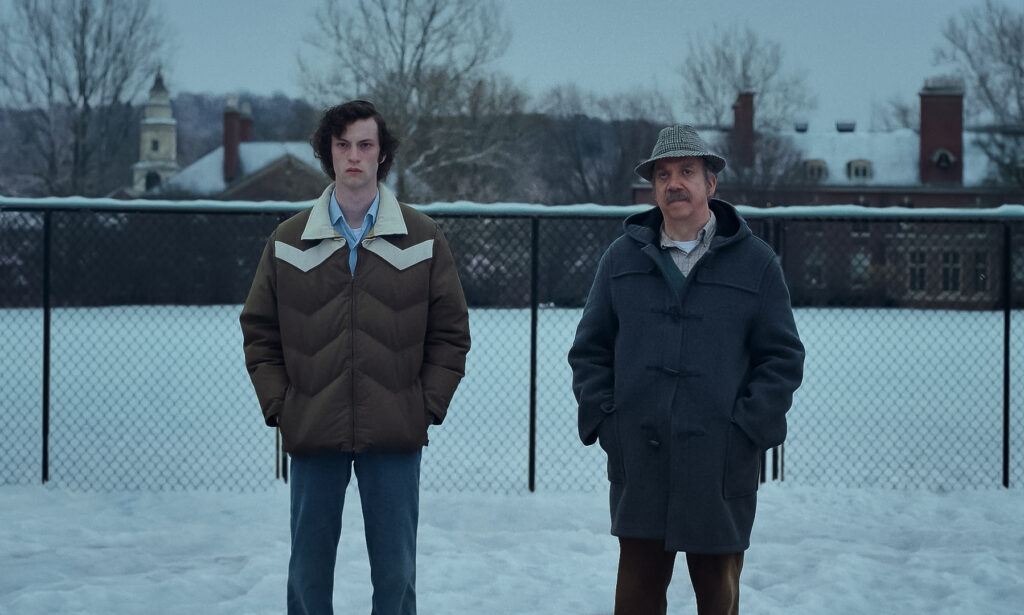
THE HOLDOVERS
Jeffrey Wright seems held back in American Fiction. The same cannot be said of Paul Giamatti, who plays a lonely, bitter classics teacher at a New England prep school in Alexander Payne’s The Holdovers. Fitted with one wall-eye contact lens, Giamatti stares at the corner of the room while fixing what’s left of his gaze on his students, whom he considers recalcitrant philistines, “entitled little degenerates.”
The Holdovers is destined to be a Christmas classic precisely because it is not a feel-good movie.
Giamatti’s performance is a pleasure to watch. He is the presiding presence in the movie, and David Hemingson’s erudite screenplay allows him free range to deliver long lines of invective. At the same time Giamatti is part of a Three Stooges act with Da’Vine Joy Randolph, as the taciturn manager of the school’s cafeteria, and Dominic Sessa, the one student left behind at the school over Christmas. If this trio seems to shut out the rest of the world and to reduce the other characters in the film to walk-ons, it’s because they are also doing that in their own lives, each trapped alone in various stages of grief.
The Holdovers is destined to be a Christmas classic precisely because it is not a feel-good movie. Randolph’s son is a casualty of an unjust war, Sessa’s father is a hopeless mental case with the official Cuckoo’s Nest haircut of institutionalized madness, and Giamatti is denied a happy ending as he drives away from the school with a bottle of pilfered brandy pressed to his lips. The movie isn’t feel-good. Set in 1970, it is nostalgic. Payne and cinematographer Eigil Bryld have given The Holdovers a warm, old-school shot-on film look that the viewer can slip into like a coma.
THE TEACHERS’ LOUNGE
Leonie Benesch gives a sensitive, lively performance in The Teachers’ Lounge as Carla, a young seventh grade teacher in Hamburg. With her two big, functional eyes and her positive attitude, she’s the opposite of Giamatti in The Holdovers. She shows love for her students and a great desire to help them, which she expresses with dance-like physicality in the gym classes she teaches along with her main job, teaching math, an arrangement that would be comic in an American film but in a German one is graceful and nurturing.
She’s too good to be true, so of course director İlker Çatak is setting her up for a fall. A series of thefts at the school implicates minority students in the eyes of the other teachers, but Carla suspects one of her colleagues, thereby initiating a series of events that will embroil this place of learning in recriminations, ill will, and chaos. But it’s a lite, low-stakes kind of chaos. The lesson here is that no good deed goes unpunished. The film is a mild version of a Haneke movie, seemingly made for the middle-schoolers who populate it and who are presumably not yet ready for a full-strength Piano Teacher’s lounge.
BARBIE
Barbie like no movie before it pushed the limit of what constitutes legitimate news versus what’s free publicity for a pseudo-event designed to rake in money for a large corporation. Obviously Barbie came out ahead, making $1.5 billion worldwide, though even with that haul, Barbie’s parent company, Warner Bros. Discovery, somehow lost $3.1 billion in 2023. If their board of directors was on the ball, Margot Robbie and Greta Gerwig would be running the studio, not David Zaslav.
Barbie like no movie before it pushed the limit of what constitutes legitimate news versus what’s free publicity for a pseudo-event designed to rake in money for a large corporation.
The push for Barbie was intense. Its only analogue was the right-wing media’s obsession with Hunter Biden, the MAGA Barbie. CNN.com, which is also owned by Warner Bros. Discovery, published 128 separate news stories about the film. The New York Times published 84 pieces on Barbie, and mentioned Barbie in non-Barbie-related pieces over 450 times. Richard Brody of the New Yorker became Barbie’s Number One fan among film critics, tweeting about Barbie or its principals some three dozen times, including one tweet in French and another that stated that Barbie was a better movie than 2001: A Space Odyssey, “except for the unrivalled Stargate sequence.” Brody had mentioned Barbie as early as February 2020, more than three years before the film came out, in a review of the Robbie-superhero-starrer Birds of Prey, in which he told readers he was “greatly looking forward to her performance in the title role of Barbie, the next film by Greta Gerwig, who, I suspect, will have an altogether more original view of Robbie’s art.” That is what you call advance praise.
One CNN.com piece, on how enraging it was to the author that Robbie and Gerwig were not nominated for a Best Actress and Best Director Oscars, stated that the only people who “didn’t love” Barbie were “reactionary right-wing dorks.” When Hillary Clinton weighed in with a punny tweet to console Robbie and Gerwig about the snub, it became clear that Barbie was a form of official art, an item of capitalist realism about which only one set of values should be expressed in public. It was supposed to matter that those values were feminist and not just consumerist.
This view and its proponents became clearer for me recently when a cinephile friend told me about how last July she had excused herself from a bachelorette party that included going to see Barbie. She thought she had dodged the pink bullet, but one day in January while she was out she got a couple of texts from her building’s unofficial super, a man in his sixties. “Have you seen Barbie?” the first text asked. “If not, you should. It’s quite clever and funny,” said the second. “I left it on your stair just in case.” When she got home and entered her building, there it was: a Blu-Ray of Barbie borrowed from the local library sitting on the steps to her door.
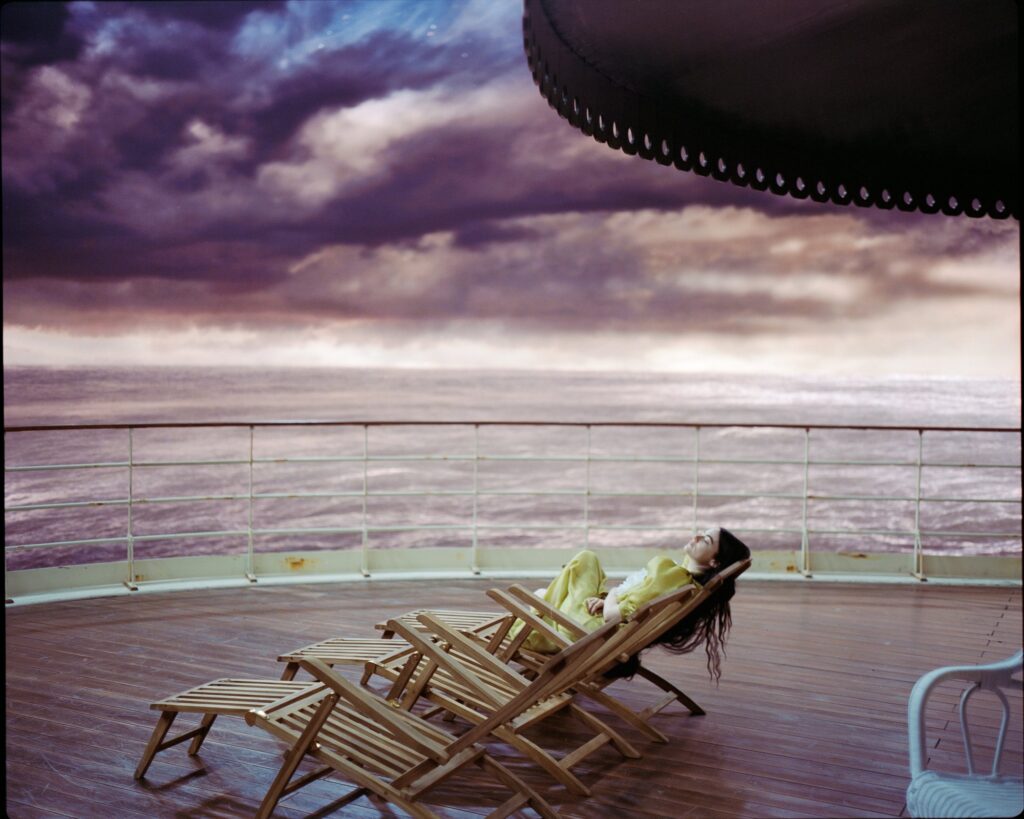
POOR THINGS
Yorgos Lanthimos is our leading auteur of half-baked ideas, but since he’s begun working with screenwriter Tony McNamara on movies starring Emma Stone, things have started to gel and get moist. Poor Things, a film of “sugar and violence,” is a bizarro Barbie, a forceful, entertaining movie without smugness, featuring a kind of outré production design all its own. Every effect is thrown in: the film is in color and black-and-white, it pushes the use of wide-angle cinematography in new directions, hybrid animals wander about, and mad scientist Willem Dafoe belches floating orb-like bubbles—all this before the film gets to Emma Stone’s Bella, a Victorian wild child chasing mysteries of the organism through an ocean liner’s casino and a Parisian brothel.
Dafoe is a disfigured Frankenstein and Stone his messy, demanding monster, a creation that escapes his lab, moves on, and quickly takes over the action. Once she discovers the pleasures of sex (“furious jumping”) with Mark Ruffalo’s louche playboy, she leaves England for Lisbon, a world of fine dining and ballroom dancing where she gets to declare, immortally, “I must go punch that baby.”
It was reported that Poor Things looks like a Tim Burton movie. It doesn’t—it’s more like an animated Karel Zeman movie come to life—though it does synthesize almost every Frankenstein movie that came before it. Instead, it’s a film with a true Sadean quality, made for libertines, not Puritans, who will find many opportunities in it to be offended. It’s about time something so wicked was made at such a high level.
THE COLOR PURPLE
I’m troubled by writers who never ask themselves, “What if I didn’t do this?” Some things should be passed over in silence. I felt that way last fall when Taylor Swift: The Eras Tour came out in theaters. When I noticed aging male film critics rushing to see this nearly three-hour concert film so they could write about it, I was embarrassed for them.
Some things should be passed over in silence.
Another kind of movie is also like that to me: musicals based on movies that were not musicals but which became stage musicals, then movies again. I saw the musical version of The Producers when it came out in 2005 and it struck me as inert, laughless, and botched. Since then I have avoided musical versions of Hairspray and Mean Girls, and probably some others I’ve forgotten existed.
The new Color Purple movie musical is one of these. It starts well, with a pre-title song called “Huckleberry Pie” performed with delighted charm by Phylicia Pearl Mpasi and Halle Bailey as sisters, accompanied by Colman Domingo as a bluesman cowboy playing banjo on a horse. Set along the Georgia coast amid trees draped in Spanish moss, this number appeared to pay homage to Daughters of the Dust and was directed by Blitz Bazawule in a very up-to-the-minute CGI style that showed a certain flair, like maybe the movie was going to use its artifice to some new advantage other of these musicals had not. As an introductory interlude that evoked life in a rural Black community in 1909, it promised something that was not just hokum.
But then the rest of the film was just hokum, and there was a lot of it, with plenty of beatings, especially for poor Celie (Fantasia Barrino) at the hands of Mister (Domingo), who gets his comeuppance and is forgiven, and as an act of contrition decides to wear shimmery “fancy pants” to the big group hug at the end. He looked clownish but as punishments go he got off easy.
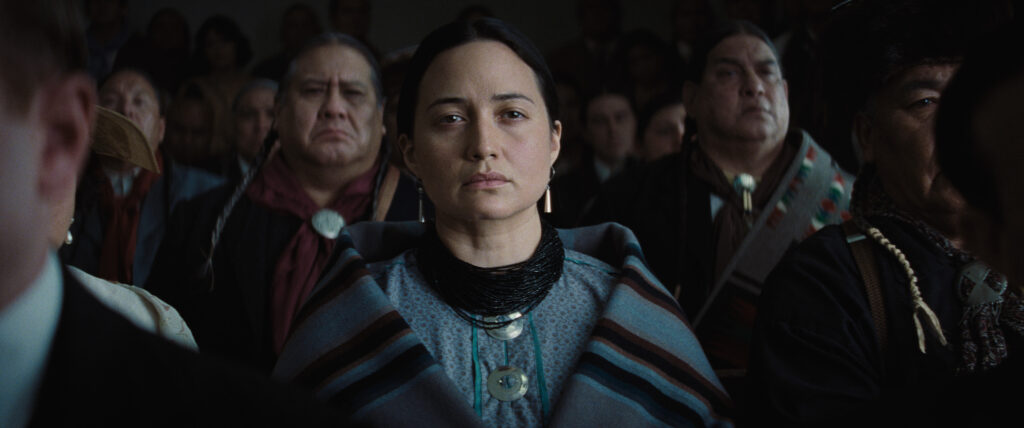
KILLERS OF THE FLOWER MOON
The brute fact of Killers of the Flower Moon’s three-and-a-half-hour existence is something to be reckoned with, but it also emphasizes how its story is hard to endure. Scorsese’s film is truly novelistic, like a Dreiser novel—which is to say it also has the detail of a silent Stroheim film from the time in which most of it takes place, the late 1910s and 1920s, offering meticulous period set decoration, props, and wardrobe, down to the boots and driving goggles.
Once again, as he has been doing at least since Goodfellas in 1990 and up through the more recent Silence and The Irishman, Scorsese presents a mentor relationship in which an older man takes a younger one under his wing so that he can exploit him by making him do his dirty work. Here, this is pushed to its extreme, as it involves the murder of a race—the Osage on their reservation in Oklahoma—and the expropriation of their oil-rich land. DiCaprio and De Niro have lost almost all expressiveness at this point in this kind of story, both of them frowny-face masks riveted in place, with all the other white people, bastards with their hands out, looking like variations on the Pep Boys. Scorsese compares them to wolves, the same way the Chinese communists in Kundun were visually equated with vultures pecking at the bones of the dead.
The Osage are lost here, literally “vanishing Americans,” a racist concept hammered home by De Niro’s villain. In the film’s criminal scheme, the performances of the Native actors are swamped by the white country and Americana musicians Scorsese has cast in small roles as various murderers, thieves, and creeps. William Belleau, by contrast, is tragic and difficult to watch as the hapless Henry Roan, the melancholic, suicidal, alcoholic Osage who is befriended and discarded, shot in the head and left in the road.
The Osage are lost here, literally “vanishing Americans,” a racist concept hammered home by De Niro’s villain.
For the first time in a Scorsese film, however, a woman is at the center of the men’s relationship. Lily Gladstone’s Mollie, a wealthy, diabetic (she’s “got too much sugar”), and unmarried Osage comes between Dicaprio’s Ernest and De Niro’s Hale after Hale subtly sets it up for Ernest to marry her. Gladstone’s performance is unlike anything else in Scorsese’s work. She’s calm and smart, but taken in by Ernest even though she knows he’s a kind of wolf, too—“coyote wants money.” In the second half of the film, Gladstone must portray her as the martyr of the film’s sickening, deglamorized violence. She lingers between life and death, unaware she’s being poisoned by her husband as she grieves for her mother and sisters, dying one by one.
Ernest starts the film as a taxi driver, reminding us of Scorsese the modernist auteur of the 1970s, who here reasserts himself outside of this naturalistic movie in its coda, where the lie of entertainment mirrors the contemporary scenes of the cleaners in The Zone of Interest. In Europe there are museums for these horrors, their history expressed in piles of shoes and eyeglasses. In America it’s called showbiz.
NYAD
“Yeah, well, fuck that. I’m gonna swim from Cuba to Florida” is probably the least relatable statement I’ve ever heard in a movie. Annette Bening, in the title role as Diana Nyad, however, convinces us that it’s worth doing, no matter how many times she has to try. As Diana’s ex-lover, best friend, and coach (Jodie Foster) says, “When she starts hallucinating, you go with it.”
Nyad is a tribute to Diana’s self-centered delusion, which the film eventually locates in her father’s obsession with her destiny as a swimmer because he’d changed their last name to the goddess-like but fishy Nyad, and in the years of sexual abuse she suffered at the hands of a coach while she was a teenage Olympic swimmer in training. In the ocean she mentally escapes her past, using boomer pop hits like “The Sound of Silence” to measure her pace during these self-imposed, saltwater marathons. The film should come alive to these songs but it never quite does. A scene of a near shark attack is immediately followed by Diana just getting on with it, to the tune of Neil Young’s “Heart of Gold”—she is crossing the ocean for one, you see. Nyad was directed by the sports doc couple who made Free Solo, and follows its story closely and faithfully, never rising much above sea level. Its one hallucinatory underwater scene looks too much like it’s set at a fish-bowl castle. I couldn’t tell if that was intentional or not.
MAESTRO
Bradley Cooper’s ambitious Leonard Bernstein biopic starts out lively, presenting the world of midcentury classical music and life in the Carnegie Hall apartments as a fast-paced, same-sex romp, with Aaron Copland shouting advice from off-screen. It’s in black-and-white, too, the same way the similar 1950s milieu of New York theater is presented in Asteroid City. Soon, though, it’s in color and bisexual Lenny gets bogged down by a wife (Carey Mulligan) and a country house with a swimming pool, where, during the parties they throw, they also throw around adjectives like “big-ass” and “random” and phrases like “misread the room,” which I’m certain no one was using in the Dakota or in Connecticut in the 1970s.
Mulligan’s Felicia has to put up with a lot in Bernstein. She knows what he’s like and what he needs to be happy and to do his work, and she gives up her career as an actress for him and their children, ignoring his male lovers as best she can while sliding inexorably into the lonely role of long-suffering wife. Bernstein exists parallel to her, and Cooper’s performance is daring and convincing, but something doesn’t add up. Since the film skips the 1960s, by the time we get to Felicia’s cancer, Lenny and she have aged and now look like Evel Knievel and Nancy Reagan miscast in an unhappy marriage, a change-in-mood time leap commandeered from Boogie Nights and now standard in biopics that include cocaine. Gone are the late 1950s and all of the 1960s, when Bernstein went radical chic and was doing TV shows with Miles Davis and donating money to the Black Panthers at cocktail parties in his huge apartment with Otto Preminger and Richard Avedon by his side. That’s a loss. If you have a chance to have somebody play Preminger in a movie, take it.
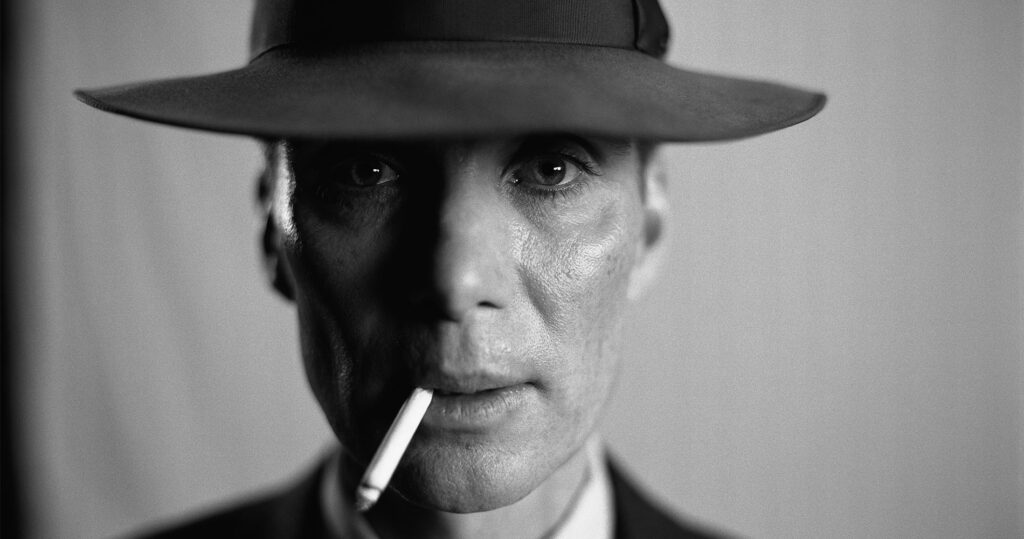
OPPENHEIMER
Robert Oppenheimer (Cillian Murphy) is closeted/not closeted, too, but his non-secret is left-wing politics and his parties are with the CPUSA. Around sexy fellow travelers he can’t help mentioning he’s read all three volumes of Capital, in German, making sure to add that Marx bored him. This tension also splits Oppenheimer into black-and-white and color. The color sections of Nolan’s film concentrate on quantum physics and show the development of the atomic bomb at Los Alamos, the frenzy of the Trinity Test and its aftermath; the black-and-white parts follow the confirmation hearings of Lewis Strauss (Robert Downey Jr.), a former chair of the Atomic Energy Commission and Oppenheimer’s stealth nemesis, who is up for a seat in Eisenhower’s cabinet. Politics is for gray men; science is chromatic.
Murphy inhabits Oppenheimer so completely that at times he disappears into the background of his own biopic, making it easy to understand why his wife, Kitty (Emily Blunt), continually implores him to fight politicos redbaiting him. Downey, freed from his iron suit and the MCU, is plunged into a hidden universe of waves and particles, where Oppenheimer casually dismisses him because he knows Strauss is in over his head. He doesn’t realize he’s paranoid, too. Downey’s performance is one of subtlety and guile, right up to the last twist. I have never seen an actor so thoroughly redeemed by taking a hard, thankless role like this.
Downey’s performance is one of subtlety and guile, right up to the last twist.
The film is cast like a Preminger movie, specifically like Advise & Consent, which it resembles in key ways: the backroom politics and endless meetings with the branches of the federal government and the panoply of stars in minor roles. Advise & Consent had Burgess Meredith and Betty White, this has Benny Safdie and Casey Affleck.
Nolan often cuts their dialog within an inch of its life, making his scenes less dynamic so that their words can emphasize how high the stakes are (ending World War II; nuclear holocaust). He does make room for the romance of radiation within the drama of security clearance. When Oppenheimer meets Kitty, we’ve already seen the firework bursts of color that play in his head when he’s contemplating the motion of atoms in space, so there is an erotic charge when he explains physics to Kitty at a nighttime commie shindig in Pasadena. He looks almost into her eyes, touches hands with her, and describes the subatomic action in “this glass, this drink, this countertop, our bodies.” Later he’s part of a government group enumerating potential deaths when the A-bomb is dropped on Hiroshima, a corporate meeting that echoes similar conclaves in The Zone of Interest. These scenes of groups of men tallying mortality are an obscene cloud hovering over 2023 movies.
RUSTIN
The political activist Bayard Rustin, a contemporary of Oppenheimer and Leonard Bernstein who organized the March on Washington in 1963, was both gay and an ex-communist, so the struggles in his biopic are not going to be easy ones. Colman Domingo’s portrayal of him in George C. Wolfe’s Rustin is warm and involving, and this is a somber drama about a consequential time in our nation’s history. Yet the film’s perfunctory elements are enlivened by kitsch. Rustin mixing cocktails in his bachelor pad and playing the lute for his boyfriend was more than I expected.
The film, like Oppenheimer, offers a who’s-who of its specific milieu, the Civil Rights Movement and its leaders. It’s odd that Jeffrey Wright is so much stronger in Rustin than he is in American Fiction. Here he plays Adam Clayton Powell Jr. as a self-important raconteur with a cigarette holder, a man who doesn’t know he’s past his prime as a macher in national politics and race relations. The British guy who plays Martin Luther King Jr. (Aml Ameen), on the other hand, can’t stand up to Domingo at all, or even to Chris Rock’s Roy Wilkins. I’m convinced that hiring Brits to play MLK is a continuing conspiracy to undermine his message. Somehow the FBI has taken control of the casting.
The Branford Marsalis jazz score in Rustin is as tasteful as expected, the film less so. Rustin yelling “Cheese spoils! You should’ve known better!” at the movie’s moment of truth came out of nowhere, like one of those loud, low blats Lester Young used to drop into solos.
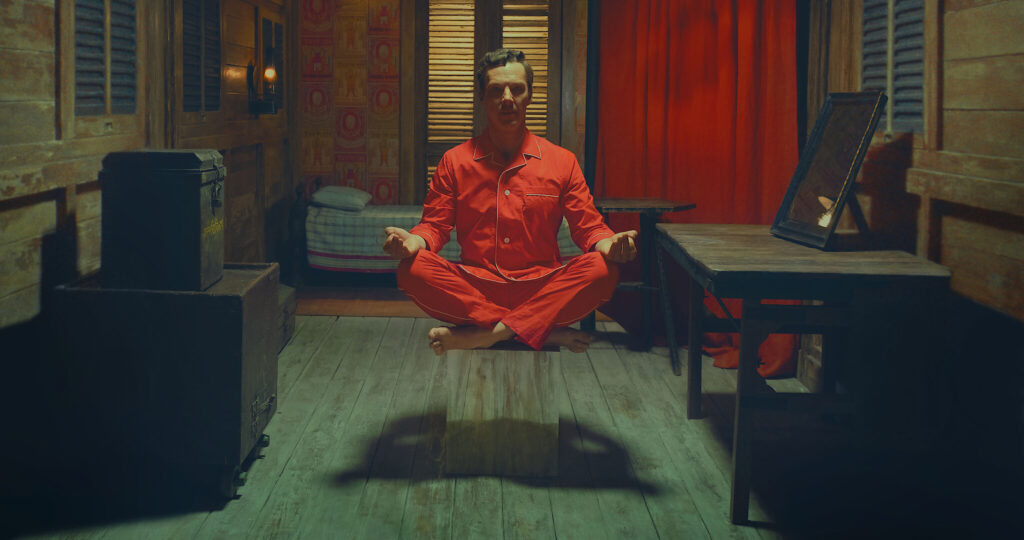
THE WONDERFUL STORY OF HENRY SUGAR
Wes Anderson released five movies in 2023. Four of them are his Roald Dahl adaptations, shorts, the longest of which is The Wonderful World of Henry Sugar, at thirty-nine minutes. The others—Poison, The Swan, and The Rat Catcher—run seventeen minutes each. His feature film, Asteroid City, is a fleet 105 minutes, with no waste. That’s 195 minutes of cinema, about the same length as Killers of the Flower Moon or Oppenheimer.
Bifurcated between black-and-white and color sequences, Asteroid City has a lot in common with Oppenheimer and Maestro. Its plot is clear enough, though it seemed to confuse some people, who somehow also found it thin. The film in color is a 1950s teleplay, the writing and production of which we see in black-and-white. In the play, a group of scientific whiz kids and their parents have gathered for an astronomy convention in a tiny town in the Southwest that’s located near a nuclear test site. The kids are to be presented by a government agency with achievement awards for their various inventions. During the ceremony, an alien visits to retrieve an asteroid that fell thousands of years ago. Meanwhile, two of the parents—one a famous movie actress (Scarlett Johansson), the other a roving photojournalist (Jason Schwartzman), both actors in the play—briefly fall in love before going their separate ways.
It draws on a rich history of midcentury drama and science, moves swiftly, nothing lingered on, it isn’t a biopic, and it makes no concessions to emotionality.
Because of the sets, which were built on location, the film has an abstract quality. It draws on a rich history of midcentury drama and science, moves swiftly, nothing lingered on, it isn’t a biopic, and it makes no concessions to emotionality. In Asteroid City and these Dahl shorts, through elaborate but simple on-screen stagecraft, Anderson presents an ever-changing world of plastic beauty that he creates from the ground up. The screenplays are hyper-literate. In an unprecedented total avoidance of cheese in commercial narrative filmmaking, the act of writing and the writers doing it appear in these movies, but Anderson refrains from showing their writing on the screen in superimposition.
Just by being cinema Anderson’s work now seems to some viewers avant-garde and difficult, yet also something obvious they can parody on social media—another sign of the regression of the movies into content. In Asteroid City, Rupert Friend has a minor role as a singing cowboy in the teleplay who’s later revealed to be a British actor as, of course, is Friend. That’s another unprecedented thing, to reveal the Brit under the cowboy. Friend narrates and stars in The Swan in full British mode, as an adult version of the boy in the story who is set upon my two unseen, gun-toting bullies, whom he also brings to life just through they way he delivers their dialogue. Friend’s also in The Rat Catcher as an auto mechanic with a shop next to a newspaper office. There was something so marvelous in seeing this actor in four roles, each of which he nailed, in these excellent films that did not get the recognition they deserved.
SOCIETY OF THE SNOW
J. A. Bayona’s Society of the Snow is this year’s All Quiet on the Western Front, a mishandled European remake of an American film based on a grueling historical event and a best-selling book. Bayona has become a worse director since he made The Impossible in 2012, also a disaster movie but much more cinematic and enjoyable in the way it seemed to punish a tourist family for going on vacation in Thailand right before a tsunami. As CGI has become dominant, Bayona’s work has suffered along with the cinema in general. Because of that we have to suffer, too.
The one fact everyone knows about the Alive disaster is that the Uruguayan rugby players who were trapped in the snow in the Andes after their plane crashed had to resort to cannibalism to survive. Netflix is touting Society of the Snow as a “much-needed celebration of the human spirit” and downplaying the cannibalism, which is now known as “survival anthropophagy,” which doesn’t sound much nicer and is still the movie’s selling point. It is inhuman to deny that. Bayona ends the movie imitating Terrence Malick, because the boys had a religious experience, which is what having very little to eat in freezing temperatures for seventy-two straight days will do to you.
I have known about the Alive disaster almost my whole life. One summer afternoon when I was about 7, on a rainy day when I had to stay in, I was sitting in the living room with my grandmother in Alton Bay, New Hampshire, watching an afternoon talk show on TV. The survivors of the crash were the guests. I had never heard of cannibalism. It was a completely new concept to me, and at first I couldn’t understand what these young men meant as they were discussing their plight with the host. When I began to get what had happened, I was horrified. I couldn’t believe it. These guys had eaten human flesh? I turned to my grandmother and quietly asked her, “Grammy, if we were in a plane crash together and I died, would you eat my skin?” She answered without taking her eyes off the TV screen. “Sometimes in very bad situations,” she said, “we have to do things we wouldn’t do under other circumstances,” ending our conversation right there.

MAY DECEMBER
Natalie Portman plays an actress in Todd Haynes’s May December, an alarming film with a poisonous view of drama. An equally brilliant companion piece to Haynes’s Safe, from 1995, which also starred Julianne Moore, May December identifies and measures the new surfaces of banality that have emerged in our lives in the intervening twenty-eight years.
Moore is Gracie, a suburban housewife in Georgia in her fifties. Twenty-three years previously she’d had an affair with a 13-year-old seventh grader, Joe (Charles Melton), got arrested for it, became a tabloid media sensation, gave birth to Joe’s son in prison, then married him when she got out. The story is in some ways similar to Gus Van Sant’s To Die For, which came out the same year as Safe, and which was rooted in the Pamela Smart case the way May December comes out of the Mary Kay Letourneau story.
The best acted film of the year, it compares people to all sorts of animals, including snakes and coyotes as in Killers of the Flower Moon, settling on butterflies and golden retrievers.
The present in May December is a goody-goody era in which sex crime and psychological complication have been swept under the rug. Portman arrives in Gracie and Joe’s life in the form of legitimate fame—she’s the star of a hit network-TV series called Norah’s Ark who will play Grace in an indie movie—but she’s also a duplicitous force who will rob them of their story and plunder Gracie’s odd persona (odder than in the Bergman film) along with her slight lisp. The best acted film of the year, it compares people to all sorts of animals, including snakes and coyotes as in Killers of the Flower Moon, settling on butterflies and golden retrievers. These are associated with Joe, a nice-guy father of three, now in his thirties but stunted and kept babyish by Gracie, who makes him the provider and caretaker of her frilly, conventional life.
In showing Portman’s Elizabeth concentrating on “the work,” Haynes slowly reveals her as a self-centered Hollywood monster starting to understand that she’s in the presence of a bigger monster. The film associates Moore’s Gracie with pineapple upside-down cakes the way Poor Things associated Emma Stone’s Bella with Portuguese custard tarts—pastries of excess and derangement.
PERFECT DAYS
In my late teens I was obsessed with Wim Wenders, and I was fortunate because I got to see almost all the features and shorts he made between 1968 and 1982 before I saw Paris, Texas and Wings of Desire and began to doubt him. There were a lot of Wenders film series and revivals going on then, it seemed like The American Friend was always playing somewhere, and for a brief time in the early 1980s, Wenders was revered by young cinephiles more than Godard. In retrospect it is easy to see why. A cinephile director himself, dedicated to Nicholas Ray, Wenders made films of ennui and longing set in desolate landscapes in Germany and America that showed us what we saw through the windshields of our cars. His movies went directly to the heart of the kind of men who are in them: romantic, post-punk loners who can’t express their feelings verbally and like the Kinks.
Now Wenders has entered his late period, so Perfect Days is a simple version—an excessively simple version—of all that. Wenders in a sense has come home. Not to Berlin but to Tokyo, and that’s important in this context. In an interview with Wenders that I read back in that day, in a monograph published by New York Zoetrope, he discusses his love of Ozu’s films and the people in them. It has stuck with me all these years. “I don’t like American families at all,” Wenders told interviewer Jan Dawson. He continued:
In American films, I mean. And in reality. These Japanese families are so strong to me, even though I have nothing to do with them: I have nothing to do with the way they eat, or with the way they sleep, or with the way they get drunk all the time. It has nothing to do with me; and I feel so close to them that, if I had to choose, I’d rather sleep on the floor, and sit my whole life on the floor, and get drunk every day, and live in an Ozu family, than pass a single day as the son of Henry Fonda.
By obliquely referring to Peter Fonda, Wenders is slagging Easy Rider and the New Hollywood generation who loved John Ford movies as much as he did, and offering a differentiator. He knows about something they don’t, and he is willing to be abject about it. All this seemed odd coming from a man who often dressed like he was auditioning for the lynch mob in Johnny Guitar, and it confused me, though it got me to watch Ozu films. I owe Wenders that.
I have a feeling Wenders has not slept on the floor very much since that interview almost fifty years ago. I saw some photographs of Wenders from the Perfect Days shoot in which he is dressed in the same Tokyo Toilet cleaning uniform Hirayama (Kôji Yakusho) wears in the movie. He’s still abjecting himself. Now he’s made a movie about it.
The meek Hirayama lives in a tiny apartment, sleeps on the floor, and listens to classic-rock cassette tapes in his van, which is outfitted for toilet cleaning the way the van in Kings of the Road was outfitted for fixing 35mm movie projectors. If it is raining out, Hirayama listens to a song that mentions rain (“Hey where did we go,/Days when the rains came?”); if the sun is coming up, he listens to a sunrise song (“There is a house in New Orleans/They call it the Rising Sun”). This is too on-the-nose, but like I said, simple. Here, Wenders gives us a kind of pleasant neorealism about a man who has withdrawn from life but who literally has his shit together. I thought the film was going somewhere deep into tragic territory, but no, it turns out the quiet Hirayama has a rich father. Hirayama lives the way he lives because he has rejected his family’s values—he’s proving he’s not Henry Fonda’s son. A rock song that’s not in the movie explains it: he wants to live like common people.

IO CAPITANO
Refugees from Africa who brave the Mediterranean to get to Europe are not doing it for personal glory like Diana Nyad. Matteo Garrone’s Io Capitano, however, suggests that in some cases they are. Seydou and Moussa (Seydou Starr and Moustapha Fall) are 16-year-old cousins in Dakar who spend their free time making up songs to perform for their neighborhood pals. Though they are fatherless and dominated by their mothers and sisters, their lives are full, with school and part-time jobs in construction. Still, they dream of going to Italy to be music stars. “White people will be asking you for autographs,” Moussa tells Seydou.
As in Garrone’s remarkable, incisive movie Reality, about a man desperate to get on an unscripted television show (Grande Fratello) in his home country, Seydou and Moussa have to learn the hard way. An electronics repairman in the market (Oumar Diaw) tells them Europe is cold and crime-ridden, filled with homeless people. “You think Europe is better than Africa?” he asks them. “What you see on TV is not real.”
They leave anyway, crossing the Sahara to get to Tripoli and a boat to Naples. Right away they are plunged into a precarious, dangerous world of human trafficking, violent militias, starvation, torture, and slave labor. Their journey, presented by Garrone as mythic, lyrical, and terrifying, ends with Seydou forced by Libyan gangsters to pilot the boat across the sea. Responsible for the lives of the other refugees onboard, Seydou rises to the occasion, because when you’re 16 you can do anything.
Paolo Carnera’s virtuosic, unhackneyed cinematography is the co-star here. Io Capitano is an exquisitely shot film, with the warm colors of Senegal competing against the shifting tones of the desert and the rust of the boat at sea. I’m not sure if this is the most accurate version of the situation it’s presenting, but it has got to be the most beautiful.
THE ZONE OF INTEREST
More a report on the human condition than on the banality of evil, Jonathan Glazer’s film of Nazi life next door to Auschwitz is also a Christmas card from a family of blonds in matching sweaters telling you what they’ve been doing all year. Seen as an exploitation film by people who have never seen an exploitation film, The Zone of Interest presents a series of distanced, precise tableaux, with father (Christian Friedel) going over the architectural plans of a crematorium at home in his stocking feet while mother (Sandra Hüller) tries on a fur coat upstairs and finds a used lipstick in its pocket, or tests desserts with the household staff.
Realizing this film’s inadvertent connection to a nostalgic MGM musical as I watched the The Zone of Interest placed it in new, even more dire perspective.
Do flowers scream? The off-screen space of sound in The Zone of Interest is paralleled to the scale of invisibility of the death camp, which we never see but hear in the background as Hedwig (Hüller) prepares for a garden party or goes about other activities in her family’s domestic life. Here is a single-income family with a father the head of production at the factory next door. The insistent, harrowing chill the film produces is not relieved by the fairy-tale scenes of a girl hiding food around the perimeter of the camp so that the condemned Jewish prisoners will have something to eat while they work themselves to death. Glazer shoots those scenes in some combination of camera negative and infrared photography. In one, we hear the tale of Hansel and Gretel read over the image, the part about the witch being stuffed into the oven.
The story turns into one we know. Daddy is promoted and the family will have to move out of their dream house, spoiling their happy life. This is the same plot as Vincente Minnelli’s Judy Garland musical Meet Me in St. Louis, filmed in Hollywood and released in American theaters during the exact same time frame in which The Zone of Interest takes place—1943 and 1944. In Minnelli’s film, which takes place in 1903 and 1904, the father (Leon Ames) announces that he’s taking a job in New York City and the family will have to leave their idyllic life in St. Louis. Things work out and they don’t have to, which is also where The Zone of Interest ends, before its shock cut to cleaning women wiping the glass displays in the present-day Auschwitz-Birkenau State Museum.
Realizing this film’s inadvertent connection to a nostalgic MGM musical as I watched the The Zone of Interest placed it in new, even more dire perspective. Glazer’s film is a punk provocation, like the Sex Pistols’ song “Holidays in the Sun,” with Johnny Rotten singing about “the new Belsen” and “a cheap holiday in other people’s misery” as he anticipates World War III. If this film is a work of banality, banal compared to what?
Your support matters…Independent journalism is under threat and overshadowed by heavily funded mainstream media.
You can help level the playing field. Become a member.
Your tax-deductible contribution keeps us digging beneath the headlines to give you thought-provoking, investigative reporting and analysis that unearths what's really happening- without compromise.
Give today to support our courageous, independent journalists.

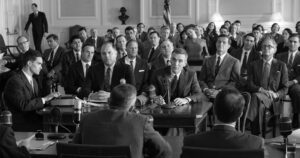




You need to be a supporter to comment.
There are currently no responses to this article.
Be the first to respond.